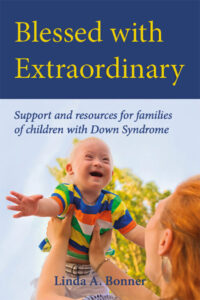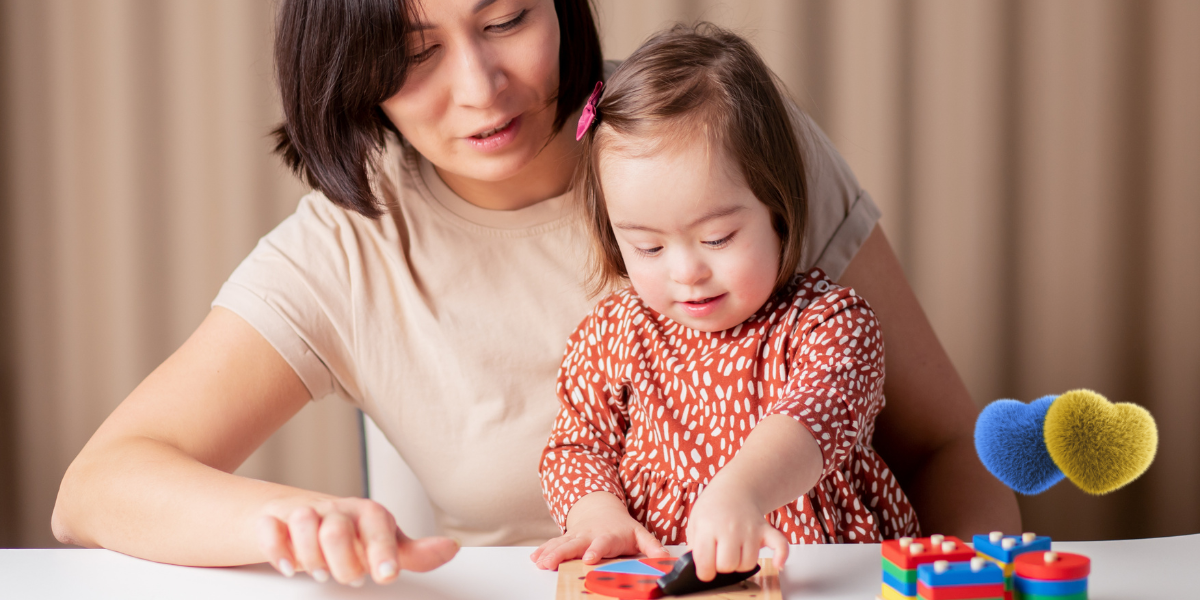Using Modification, Adaptation, Environment, & Redirection.
By: Linda Bonner
What are independent living skills?
Also known as Activities of Daily Living (ADL’s), these are the skills that every person utilizes on a daily basis to live on their own. This includes self-care skills such as eating, dressing, bathing, and grooming. Other skills such as cleaning, laundry and money management also come under the heading of independent living skills.
Some children with Down Syndrome may find these skills challenging because of physical, occupational, or cognitive reasons. With tools like adaptation, modifying the environment, and redirection, parents can help their children build confidence and secure a more successful life.
It’s important to remember that although they have a diagnosis of Down Syndrome, they are children first. It may take them longer to learn self-care skills, so parents need to practice patience. Don’t be discouraged! You are helping your child build a fulfilling life. Remember that learning these skills is a normal part of growing up. Keep things fun and let them learn at their own pace.
Modification/Adaptation
Modification and adaptation will be the key ingredient when you’re teaching independence skills, especially at the beginning.
- Encourage your child to do things for themselves. Let them experiment and don’t be afraid to let them fail at first. This is how we learn. Although that may be tough in the beginning your goal is to help them reach their full potential.
- Modify an activity or skill so your child can learn gradually and build on their progress. Examples of modifications include:
- Putting milk into a small plastic pitcher rather than working with a jug or carton in the beginning.
- Put the items they used most in each room at their level.
- Give them 2 choices of clothing, cereal, books, etc. to make decision making easier.
- Provide lots of encouragement as they learn their new skill. Practice patience!
- Adapt skills for your child by breaking it down into smaller, more manageable steps. And be sure to celebrate each step. You might use the process below:
- Write out the steps for the skill you’re teaching so you can present it the same way each time.
- When they’re ready, create a board with images* and words for the individual steps and use it each time you work on that skill. Talk about the order of the pictures so they can learn the process and let it be a visual guide. Even if they can’t read, you’ll be sharing the printed words for future learning.
- When they have learned the skill, give them the picture board, and let them run through the steps on their own. Again, encouragement goes a long way!
*Many images are available for download, or you can obtain them from a speech, occupational, or physical therapist.
One skill that can be quite challenging is getting dressed. As parents we can handle this complex task, but our children may find it difficult and overwhelming due a due to low muscle tone as well as intellectual and developmental delays. Breaking this task down to a series of specific, manageable steps will help them learn at their own pace and alleviate frustration for you and your child.
- Give them just a few outfits to choose from to teach decision making.
- Focus on one piece of clothing at a time.
- Have them get dressed sitting on the floor. This is especially helpful for children with low muscle tone.
- Help them a little less each time.
- Celebrate each small victory!
Environment
Modifying your child’s environment can help them learn certain skills more quickly. Examples include:
- A lightweight step stool to reach the sink for handwashing.
- Placing all their clothing in the lowest drawers for easy access.
- Long handled spoons for better stability
- Products for helping them button or put on socks.
- Velcro shoes or no-tie elastic shoelaces.
- Consider sensory-friendly lighting.
- Use sensory-friendly colors in their room.
- Create a cozy “quite space” where they can go if they get upset.
Redirection
One of the best tools when teaching independence skills to your child is redirection. Because of their intellectual and developmental delays, learning new skills can cause frustration for your child. Redirection is moving the focus from one activity to something they are familiar with and enjoy.
One of the biggest benefits of redirection is that you aren’t say “NO” as often. This leads to a more positive outcome by focusing on what your child CAN do. This also works if your child becomes upset or scared. It also provides a learning opportunity.
You might consider redirecting their focus with:
- A favorite toy.
- A favorite book.
- Moving to a different room or location.
- Playing cheerful music.
- Offering a small snack or drink.
- Going for a walk.
- Holding or rocking them.
Celebration
When you celebrate the small victories and successes, you are providing encouragement and helping your child feel more confident. A celebration might be a physical reward such as a treat, drink, or a small toy, a hug and words of encouragement, or a colorful chart as a visual reminder of their progress.
Take in every moment and celebrate every bit of progress. Take photos or video, record their progress on a wall calendar, record the special moments in a celebration journal and make your child feel special, appreciated, and loved.
=====================================================================
Linda Bonner is an author, speaker, and disability advocate. She is mom to an adult son with Down Syndrome who was the inspiration behind her international bestselling book “Blessed with Extraordinary: Support and Resources for families of children with Down Syndrome”.
This book is a toolbox, a resource guide, and a source of support and encouragement for families on their journey of parenting a loved one with Down Syndrome. It is a heartfelt guide written by a parent for parents with relatable stories and inspiration to help families build a fulfilling and purposeful life for their child.
Linda is also an artist, card designer, and entrepreneur. She is thrilled to share this book with others to help make a positive impact and celebrate the beauty, abilities, and contributions of individuals with Down Syndrome in local communities and around the world.
Connect: blessedwithextraordinary@gmail.com
Follow: @more_extraordinary_days
Visit: www.blessedwithextraordinary.com and Linda Bonner Studios














